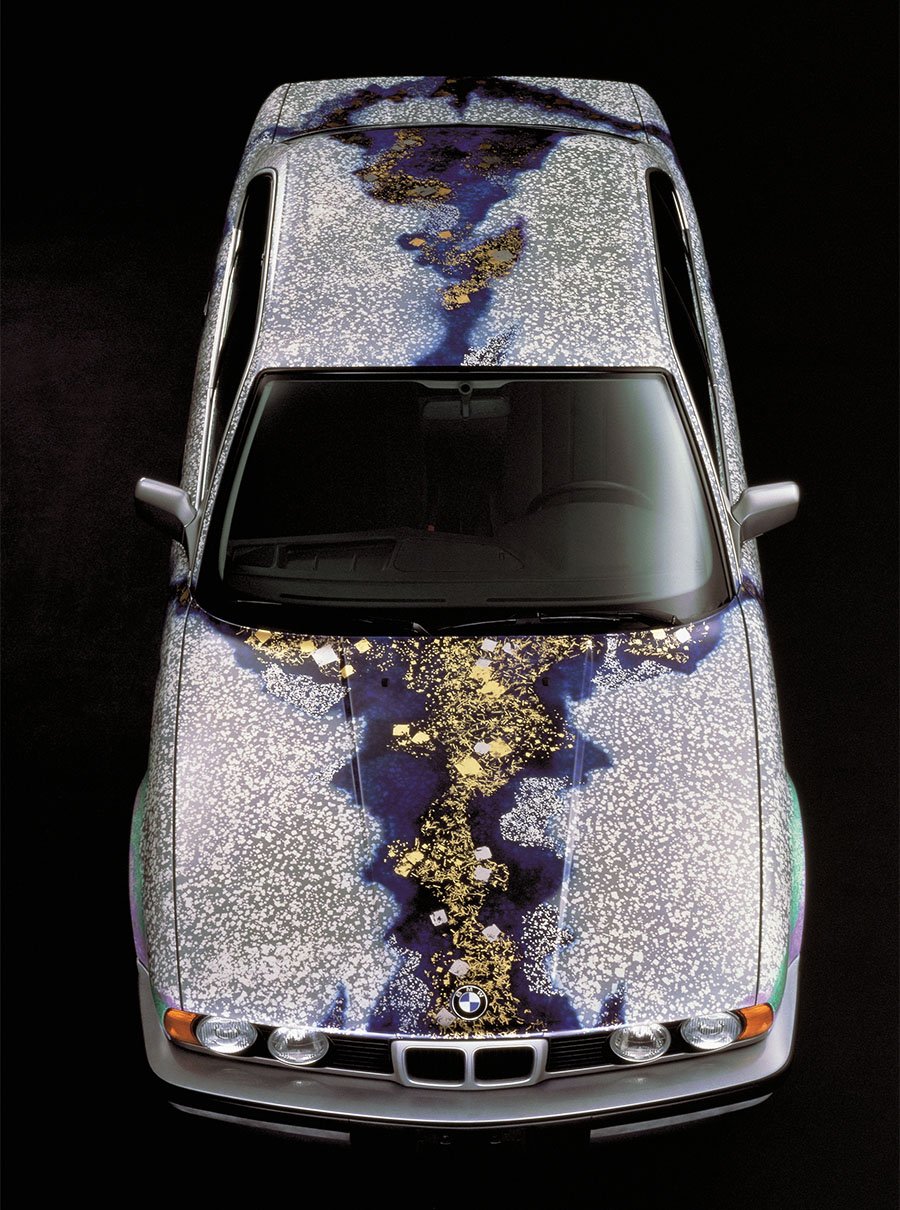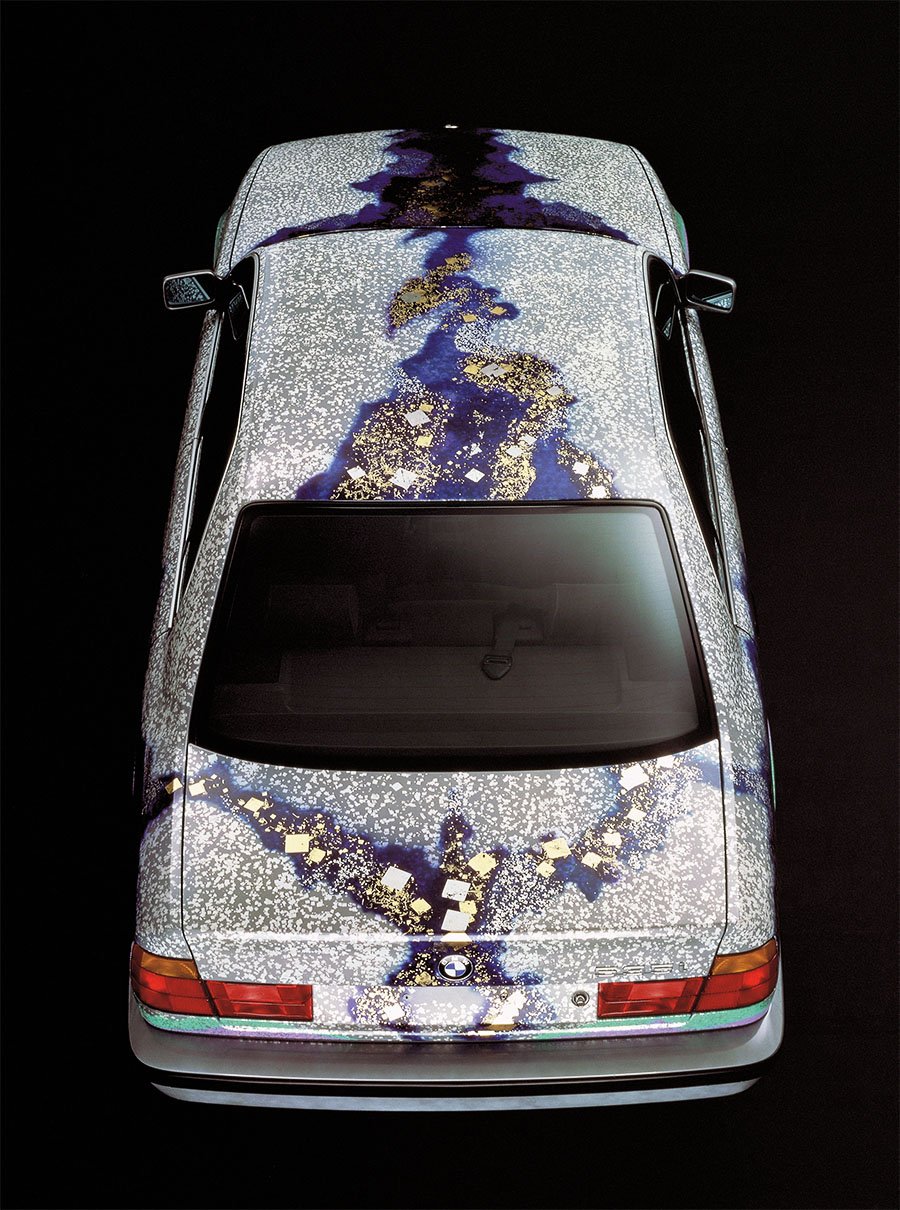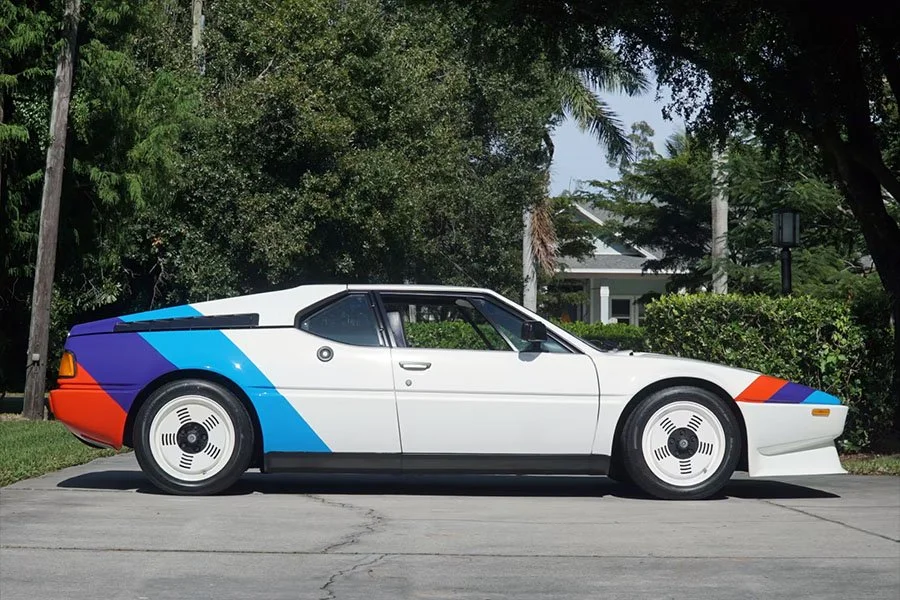Guide: BMW Art Car #9 - BMW E34 535i 'Matazo Kayama'
/BACKGROUND
Between 1989 and 1991, BMW commissioned six brand new art cars (two every year). Prior to this flurry of activity, just six works had been created since 1975.
The ninth art car came along in 1990 and was only the third to have been based on a production model. The other half dozen (to include the first four) were Group 4 and 5 racing cars.
BMW E34 535i
The E34 was the first clean-sheet 5 series since 1972; BMW’s previous E28 (introduced for the 1982 model year) had been a slightly revamped iteration of the original E12.
Development work on the E34 started in mid 1981 and continued until early 1987. Production began in November 1987 and the new model was unveiled to the press the following month.
Initially, the E34 was offered with a choice of four straight six engines: the 520i, 525i, 530i and the range-topping 535i with 215bhp. It was a 535i that BMW selected for this latest art car commission.
At the time, BMW also produced the entry level E30 3-series, the flagship E32 7-series saloon, the soon-to-be-replaced E26 6-series Coupe and the avante-garde Z1 two-seat Roadster.
MATAZO KAYAMA
Matazo Kayama was born in Kyoto in 1927 to a family with a background in the arts; his father was a kimono designer and his grandfather was a painter at the Kyoto Kano School.
Kayama studied painting and traditional Japanese arts from an early age. In 1940, he enrolled at the Japanese Painting Academy in Kyoto (aged 13).
His work, a cross between paintings and photographs, was first exhibited in 1949. That same year he graduated from the Tokyo University of the Arts with a degree in painting.
1950 saw Kayama participate in expositions by Shinseisaku (The Association of Young Artists). He also won the important Research Society Prize which was followed by the New Artist Prize in 1951.
Around this time, Kayama began to incorporate discrete elements of cubism and Italian futurism to his work. Animals became Kayama’s favourite subject, particularly Persian and Siamese cats engaged in typical feline behaviour.
Kayama’s first solo exhibition occurred in 1955 at the Yoseido Gallery in Tokyo. Three years later, the first of many solo international exhibitions was held.
In the mid 1960s, Kayama added folding screen “byobu” illustrations to his portfolio. He also began to introduce a new modernism to traditional Japanese art and expanded to work with ceramics and stone.
Kayama became a professor of Japanese painting at Tama Art University in 1966. It was the first of several academic roles he undertook, culminating in him becoming a professor at Tokyo University of the Arts in 1988.
KAYAMA’S 535i
For the commission from BMW, Kayama wanted to produce something that combined the firm’s reputation for technology with vivid associations of modern Japan.
His creation was inspired by a 1978 piece that he had produced for the Tokyo National Museum of Arts: “Snow, Moon and Flowers”.
Kayama used an airbrush to spray fine shades of blue onto the car which gave an intense contrast against the original silver paint. This stage was followed by the application of traditional Japanese techniques like metal-cut engraving (Kirigane) and foil printing (Arare) where small pieces of silver, gold and aluminium were applied to the bodywork.
The finished work was dubbed “Snow, Moon and Cherry Blossoms”. Kayama went on to say: “I only became completely aware of the clarity in the lineal design of the BMW after having seen the car in its new coloured robes.”
Text copyright: Supercar Nostalgia
Photo copyright: BMW - https://www.bmw.com


































